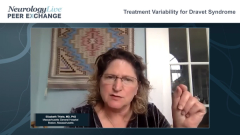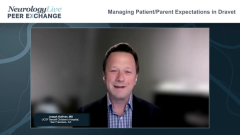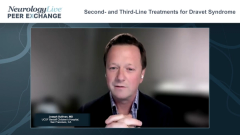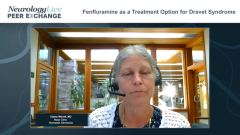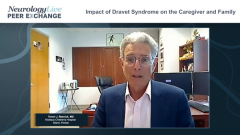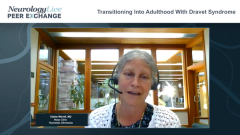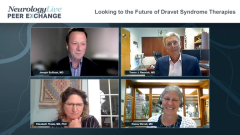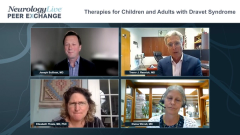
Looking to the Future of Dravet Syndrome Therapies
The panel discusses future gene therapies in development for Dravet syndrome.
Episodes in this series

Joseph Sullivan, MD: We’re going to move on to our last topic, which is exciting things on the horizon. Elizabeth, you mentioned that it’s wicked cool that we have 3 FDA-approved drugs for the treatment of seizures. Some are showing improvements in executive function and quality of life. But we still need something that gets at the underlying cause and is potentially disease modifying. I’m wondering if you can start us out with what things are on the horizon. We can have an open discussion of how we feel about these and where they may fit into this patient population.
Elizabeth Thiele, MD, PhD: There’s an enormous amount of excitement and interest, in both the patient community and the academic community, about the role of genetic therapies. I find that the patients with Dravet syndrome are very sophisticated compared with many of my other patients. Patients are coming in and asking about these therapies. In some cases, they’re explaining to me how the therapies work.
I was at a meeting several years ago about the future of pediatric trials and treatment. It was an interesting meeting because there were the patient advocacy groups, government agencies, pharmaceutical companies, and a group of academic epileptologists. It was clear from the patient communities that they want a cure. It’s really exciting we have these FDA-approved medications that show pretty good efficacy in treating seizures in Dravet syndrome, but families consider the seizures a symptom of having Dravet. They view genetic therapy as more of a possible cure. I get that. I’m also wicked excited about seeing whether they’re effective therapies. Will the efficacy be maintained? Are we able to disease modify in a profound way by early identification and treatment of the whole disorder rather than the symptoms of the disorder?
Joseph Sullivan, MD: Absolutely. As you said, seizures are just 1 symptom of the syndrome. I’ve often said that even when someone is having very frequent seizures, if you add up the number of minutes or hours in their week or month, the majority of the time, they’re not seizing. But those are the times when they have to be watched 24-7 or are impulsive or hyperactive. Not until we get at that underlying cause can begin to address some of those things.
I’m with you, Elizabeth. When patients would ask me about gene therapy a few years ago, I really felt like, “I don’t see it.” I was trying to understand based on what I learned in medical school. How are you going to get this gene into the right neurons? Then, all of a sudden, we go to some of these talks and you’re like, “Wow, I wasn’t taught that in medical school.” Maybe we can talk a little about the 2 that are truly on the horizon. There’s 1 in a phase 1/2 clinical trial with Stoke Therapeutics, using this antisense oligonucleotide. Elaine, do you want to talk a little about your knowledge of that? We can all provide some color as best as we understand it.
Elaine Wirrell, MD: Yes. It’s exciting because it’s targeting the underlying pathophysiological mechanism. It really targets the channelopathy. The hope is that you will improve not only seizures but also these other comorbidities. It’s an antisense oligonucleotide that actually prevents the nonsense-mediated decay of the mRNA strand and restores the haploinsufficiency of Nav1.1, the protein. Work in animal models has shown that it can almost essentially prevent SUDEP [sudden unexpected death in epilepsy], which is very exciting. That’s in clinical trials. We’ll see what the impact is on not only seizures but development and other comorbidities, including things like SUDEP. That’s a therapy that’s probably going to need to be given every several months. I don’t think we know the frequency of that, but it’s very exciting.
Joseph Sullivan, MD: To speak of that, to get it into the brain, it’s not a pill. It’s a lumbar puncture. It’s given into that space so it can go into the spinal fluid and circulate around in the brain. In the phase of the clinical trials it’s in, this is different from any other pediatric epilepsy treatment we’ve had before, where there are some safety data in adults. We don’t have the luxury of signing up healthy adults to undergo a lumbar puncture. This first trial is somewhat of a safety trial because we need to understand what doses, just like any other drug we talk about. Of course, we hope we get some signal based on the efficacy. Stay tuned for that. There will hopefully be some exciting data in the coming years.
There’s another approach that I’ll speak to and ask others if they want to chime in. Encoded Therapeutics is also working on a genetic therapy that uses an AAV, or an adeno-associated virus. As it turns out, the SCN1A gene is too big to fit inside 1 of these viruses in the classical sense, where you can give the virus and it gets inserted into the patient’s—in this case—neurons. They’ve developed a very slick approach where a promoter is inserted into the virus and it binds to the working copy—the nonmutated copy—of the SCN1A gene. It binds upstream, telling that gene to make more of the messenger RNA transcripts. The result is hopefully the same: More of the transcript gets translated into the protein, and then you restore the function of those inhibitory interneurons.
The difference with this therapy is that it has to be given directly into the ventricular system for it to be more widely distributed through the central nervous system. But on the positive side, it would be a single dose. The dose is correct. It would be a single procedure. That promoter would bind to that wild-type allele and tell it to keep making that messenger RNA. Those trials are planning to start up within the next 6 to 12 months, so that’s another exciting approach that we hope will get all the syndromes and other symptoms and issues that these patients have.
Thank you for watching this NeurologyLive® Peer Exchange. If you enjoyed the content, please subscribe to our e-newsletters to receive upcoming Peer Exchanges and other great content right in your in-box. Thank you.
Transcript Edited for Clarity
Newsletter
Keep your finger on the pulse of neurology—subscribe to NeurologyLive for expert interviews, new data, and breakthrough treatment updates.


